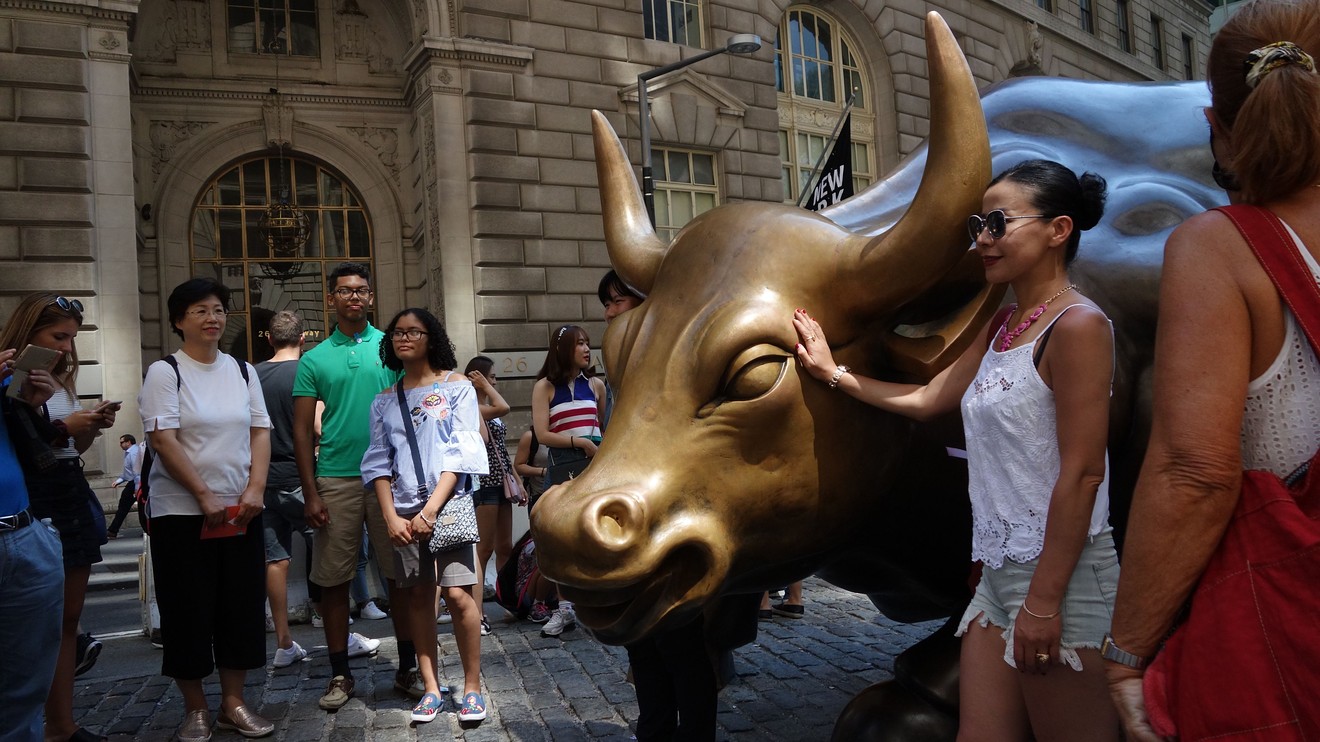
U.S. stocks were set to open lower on Wednesday ahead of a reading of private-sector employment that could help affirm the health of the domestic economy, after Wall Street was rattled by the worst survey of manufacturing activity since 2009, refreshing recession anxieties.
What did major indexes do?
Futures for the Dow Jones Industrial Average YMZ19, -0.56% were down 167 points, or 0.6%, to reach 26,351, those for the S&P 500 index ESZ19, -0.55% declined 19.30 points, or 0.7%, at 2,918.50, while Nasdaq-100 futures NQZ19, -0.65% fell 58 points to reach 7,637.50, a decline of 0.8%.
On Tuesday, the Dow DJIA, -1.28% lost 344 points, or 1.3%, to finish 26,573.04, the S&P 500 SPX, -1.23% fell 37 points, or 1.2%, to end at 2,940.25. The Nasdaq Composite Index COMP, -1.13% retreated 91 points, or 1.1%, to close at 7,908.68. The small-capitalization Russell 2000 index RUT, -1.97% saw a steeper drop, losing 1.9% to 1,493.43.
The S&P 500 closed below its 50-day moving average for the first time since Sept. 4.
What’s driving the market?
Wall Street will be closely watching the Automatic Data Processing Inc.’s private-sector employment report for signs of weakness in the U.S. economy after the Institute for Supply Management’s survey on manufacturing registered at 47.8, down from 49.1 in July, below the 50.2 estimated by economists polled by MarketWatc, representing the worst reading since June 2009. Any reading below 50 indicates contraction.
The ADP payrolls report comes ahead of the more closely followed nonfarm-payroll report due on Friday, but holds particular significance given Tuesday’s manufacturing results, which spooked investors, reviving fears of a slowdown in the U.S. as the rest of the world’s economy faces a slowdown.
Economists polled by Econoday estimate that private-sector employment for September will come in at 152,000, which would compare with 195,000 for ADP in August. The ADP reading is set for 8:15 a.m. Eastern Time.
“ADP data could reverse negative market economic sentiment if the data comes in at a respectable level. This would indicate the private sectors has not yet pulled the plug on hiring helping investor’s to shake off the fears of a slowdown leading to recession,” wrote Peter Cardillo, chief market economist at Spartan Capital Securities, in a Wednesday report.
Signs of weakness in the U.S. economy may prompt the Federal Reserve to further dial back interest rates, which have been cut by half a percentage point in back-to-back central-bank policy meetings, market participants said
How did other markets trade?
The yield on the 10-year U.S. Treasury note TMUBMUSD10Y, -0.89% was down nearly 2 basis points to 1.63% on Wednesday.
In commodities markets, West Texas Intermediate crude-oil for November delivery CLX19, +0.28% was up 7 cents, or less than 0.1%, to $53.68 a barrel on the New York Mercantile Exchange.
Gold for December delivery GCZ19, +0.17% added 70 cents, or less than 0.1%, to reach $1,489.50 an ounce.
In Asia, Chinese equity benchmarks were closed in observance of the 70th anniversary of Communist rule. Japan’s Nikkei 225 NIK, -0.49% meanwhile, fell 0.5%, wiping out a similar loss from Monday. European stocks traded lower, with the Stoxx Europe 600 SXXP, -1.57% down 1.6%.






